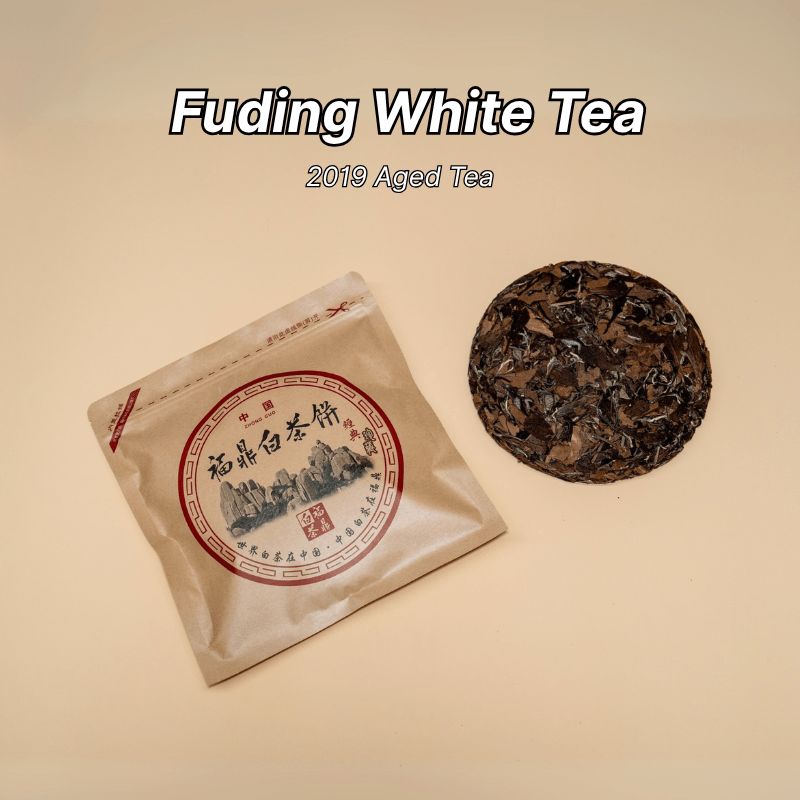
Tea Cake Identification & Buying Guide: Spotting Quality + 2019 Shoumei Recommendations
Abstract
This guide teaches you how to distinguish high-quality tea cakes from inferior ones using 5 key indicators, with a focus on Shoumei (a popular white tea cake). Learn to identify dry-stored vs. wet-stored tea, understand labeling, and discover why the 2019 Fuding Shoumei is an ideal beginner’s choice.
Key Takeaways:
1. Judge tea cake quality by raw materials (bud-leaf ratio), craftsmanship (press tightness), storage (dry vs. wet), liquor color, and taste.
2. Shoumei cakes (2019 vintage) should have intact leaves, amber liquor, and sweet, date-like notes if properly stored.
3. Avoid wet-stored tea cakes—they develop moldy odors and cloudy liquor, especially harmful for delicate Shoumei.
4. 2019 Shoumei is beginner-friendly: affordable, well-aged (5+ years), and easy to brew, with clear labeling to practice identification skills.
1. 5 Key Indicators to Spot Good vs. Bad Tea Cakes
Focus: 2019 Shoumei Characteristics
1. Raw Materials: Buds, Leaves & Stems
High-quality tea cakes start with superior raw materials—Shoumei is no exception:
5. Quality 2019 Shoumei:
1. Leaves: Mostly intact one bud with three leaves or one bud with four leaves, typical for Shoumei.
2. Stems: Thin, tender stems (rich in pectin, adding sweetness) make up 20-30% of the cake.
3. Color: Natural brownish-yellow to deep amber (5 years of aging, no artificial darkening).
6. Inferior Shoumei:
1. Overly coarse stems (>5cm) or excessive broken leaves/dust.
2. Uneven color (blackened spots from poor processing) or white mold (sign of wet storage).
2. Craftsmanship: Pressing & Fermentation
Shoumei’s light fermentation and pressing technique directly impact flavor:
7. Well-Made 2019 Shoumei:
1. Press tightness: Moderately loose—easily pried into flakes (not crumbs) with a tea needle.
2. Fermentation: Natural, minimal oxidation (no "wet piling"—a shortcut that ruins white tea’s freshness).
3. "Golden flowers"? No—Shoumei is a white tea, so golden flowers (common in Fuzhuan) indicate contamination.
8. Poorly Made Shoumei:
1. Overly tight pressing (requires force to pry, leading to uneven brewing).
2. Signs of forced fermentation (mottled brown/black leaves, not uniform amber).
3. Storage: Dry vs. Wet Stored Shoumei
Shoumei (a delicate white tea) is highly sensitive to storage—dry storage preserves its purity:
|
Feature |
Dry-Stored 2019 Shoumei |
Wet-Stored Shoumei |
|
Appearance |
Uniform amber-brown, clean edges, no mold |
Dull grayish surface, fuzzy white mold spots |
|
Aroma |
Date-like, herbal, mild aged fragrance |
Musty, damp basement-like odor (overwhelms natural notes) |
|
Leaf Base After Brew |
Flexible, bright amber leaves |
Limp, dark brown/black patches (mold damage) |
4. Liquor Color: Clarity is Key
Shoumei’s liquor reveals its true quality:
9. Quality 2019 Shoumei:
1. Color: Clear amber to deep orange, with a golden rim (sign of rich pectin).
2. Consistency: No sediment or cloudiness, even after 5+ infusions.
10. Inferior Shoumei:
1. Dull brown or murky yellow (sign of mold or over-fermentation).
2. Particles floating in the liquor (from poor raw materials or storage).
5. Taste: Sweetness & Complexity
Shoumei’s flavor should evolve smoothly across infusions:
11. Quality 2019 Shoumei:
1. First sip: Sweet, with date-like and subtle herbal notes.
2. Aftertaste: Returning sweetness in the throat within 3-5 seconds.
3. Steepability: 8-10 infusions with consistent flavor.
12. Inferior Shoumei:
1. Moldy, earthy, or bitter taste (no sweetness).
2. Flat flavor after 3-4 infusions (poor raw materials).
2. Why 2019 Shoumei is Perfect for Beginners
3 Key Advantages
1. Friendly Flavor Profile: 5 years of aging have mellowed bitterness, leaving sweet date-like and herbal notes—easy for new tea drinkers to enjoy.
2. Affordable Learning Tool: Priced at 20-40 per 300g cake (vs. $100+ for aged Pu’er), it’s low-risk for practicing identification.
3. Aging Potential: White tea improves with time—2019 Shoumei will develop deeper aged fragrance over the next 5-10 years, letting beginners experience maturation.
How to Buy Authentic 2019 Shoumei
4. Check Origin: Look for "Fuding, Fujian" on the label—Fuding is Shoumei’s core production area.
5. Verify Year: Ensure the label specifies "2019 raw material" and "press date" (ideally 2019-2020).
6. Trust Reputable Brands: Choose Fuding-based factories (e.g., Pinpinxiang, Lvxueya) with transparent processing records.
Common Shoumei Scams to Avoid
7. Fake "Vintage" Claims: 2019 is recent—avoid "30-year-old Shoumei" at low prices (likely wet-stored or counterfeit).
8. Excessive Packaging: Fancy boxes with minimal information often hide low-quality tea—prioritize clear labeling over flashy design.
3. Reading Shoumei Labels: What to Look For
Unlike Pu’er (with codes like 7542), Shoumei labels focus on these details:
9. Raw Material Year: "2019" = leaves picked in 2019 (critical for aging tracking).
10. Processing Method: Look for "sun withering" and "natural drying"—avoids artificial heat that kills flavor.
11. Net Weight: Typically 300g or 357g for cakes—ensure it matches the price (e.g., $30 for 300g is reasonable).
Final Tip: Start with a 2019 Shoumei
Use 2019 Shoumei to practice the 5 quality indicators: Check its leaf uniformity, sniff for clean date-like aroma, brew for clear amber liquor, and savor its sweet returning sweetness. It’s not just a tea cake—it’s a masterclass in identifying quality compressed tea.
With Shoumei as your guide, you’ll quickly learn to spot great tea cakes and avoid overpriced fakes. Enjoy the journey!
